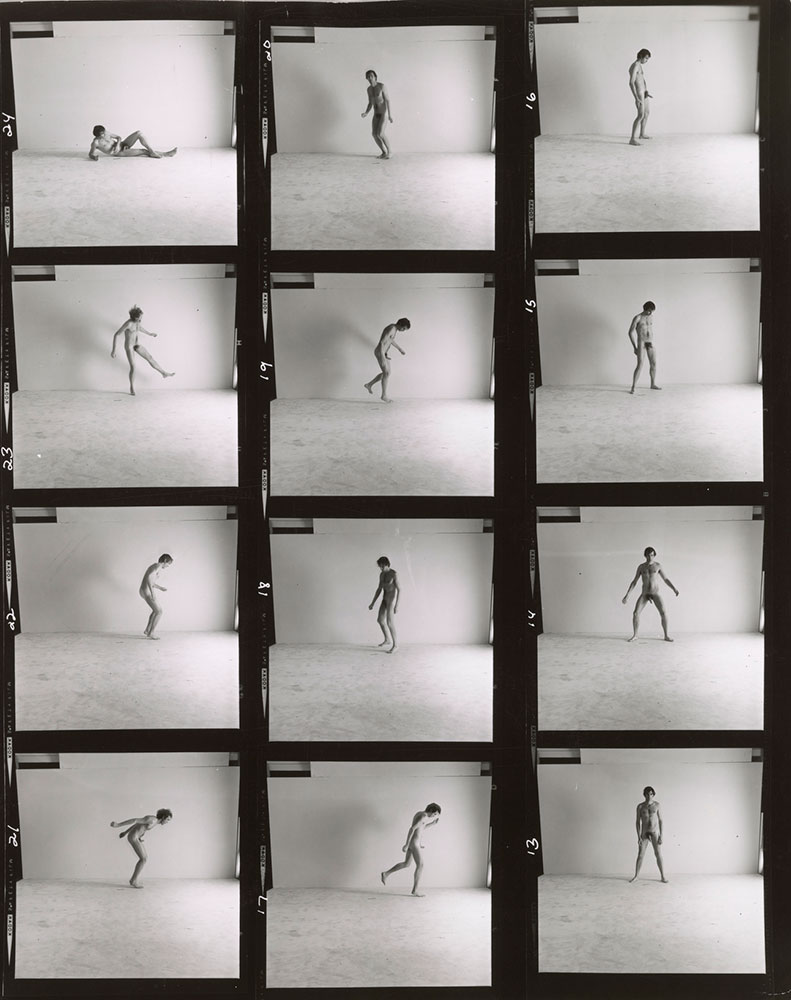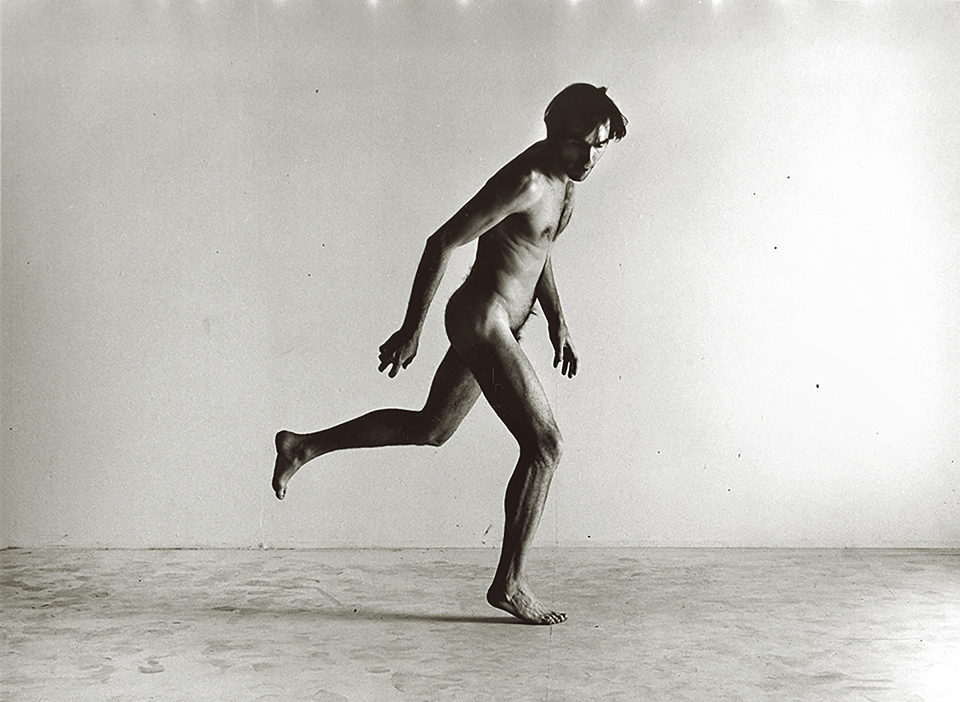“My work comes out of my life. The people I photograph are not freaks or curiosities to me. I like people who dare. I want to be discussed in hushed tones. When people talk about me, I want them to be whispering.”
– Peter Hujar

Peter Hujar, “Nude Self-Portrait Series #2 (Avedon Master Class)”, 1967 | Image courtesy of the artist’s estate, Pace/MacGill Gallery and Sunpride Foundation
Born in 1934 in Trenton, New Jersey, Peter Hujar is one of the major American photographers of the late 20th century as well as a leading figure in the group of artists, musicians, writers, and performers at the forefront of downtown New York’s cultural scene in the 70s and early 80s. His portraits of people, animals and landscapes with their exquisite black-and-white tonalities are influential. American photographers such as Robert Mapplethorpe (1946-1989) and Nan Goldin have been inspired by his work.

Peter Hujar, “Self Portrait (with a string around his neck)”, 1980 | Image courtesy of the artist’s estate and Maureen Paley, London
During his childhood, Hujar was raised by his Ukrainian grandparents on their farm in semi–rural surroundings in Ewing Township, New Jersey. After his grandmother’s death in 1946, Hujar moved to Manhattan to live with his mother and stepfather. As the household was abusive, Hujar moved out and began to live independently at the age of 16.

Peter Hujar, “Daisy Aldan, June 18, 1955”, 1955 | Image courtesy of the artist’s estate and the Morgan Library and Museum
In 1953, Hujar studied at the School of Industrial Art, where he was trained in commercial photography and interested in being a photographer. During that period, he encountered Daisy Aldan (1923-2001), a poet and a free-spirited lesbian, who was portrayed in the earliest of his works in the Morgan show. Following Aldan’s advice, Hujar seeked jobs with professional photographers in Manhattan, becoming a commercial photography apprentice. Hujar’s photographic education and technical mastery was acquired in commercial photo studios. By 1957, at his age of 23, Hujar was making photographs now considered to be of museum quality. In 1964, Hujar became a chief assistant in the studio of the commercial photographer Harold Krieger (1925-2015).

Peter Hujar, “Thek in the Palermo Catacombs”, 1963 (reproduced from the original negative, 2010) | Image courtesy of the artist’s estate and Peter Hujar Archive LLC
During his lifetime, Hujar rejected many opportunities to show his work in prestigious galleries and museums as he was concerned about how his photographs were exhibited and whom he worked with. But “Portraits in Life and Death” (1976) with an introduction by Susan Sontag (1933-2004) was published, showing his photographs of the Capuchin Catacombs of Palermoduring traveling with his lover Paul Thek (1933-1988) in Italy.

Peter Hujar, “Susan Sontag”, 1975 | Image courtesy of the artist’s estate and Peter Hujar Archive LLC
When he died of AIDS at the age of 53 in 1987, a complex and profound body of work left behind. His photographs have been the subject of solo exhibitions throughout the United States and Europe, and are held in the permanent collections of institutions worldwide since 1990.
The master class in 1967 as Hujar’s turning point in career
One of the breakthroughs in Hujar’s career was his acceptance into the master class in 1967, a weekly seminar taught by Richard Avedon (1923-2004), an iconic fashion photographer who later was one of Hujar’s biggest collectors, and Marvin Israel (1924-1984), famed art director.

The contact sheet of ”Nude Self-Portraits Series”, New York, 1967, 2013.108: 8. 438a | Image courtesy of the artist’s estate and the Morgan Library and Museum
“Nude Self-Portrait Series” are Hujar’s four-part work made during the master class. Male nudity became one of his best-known motifs. His brilliance in a master class led to assignments from Harper’s Bazaar, GQ and other publications. Hujar then quitted his job in commercial photography and began to pursue his own work, following with a dramatic expansion of his output.

Peter Hujar, “Candy Darling on her Deathbed”, 1973 | Image courtesy of the artist’s estate and Peter Hujar Archive LLC
Hujar’s documentary approach drew attention to the overlooked detail in society. The reality of living, subcultures, the people and intimate moments of Downtown New York have been captured by Hujar. For Hujar, the subjects could not be just anybody. They are people who dare. He photographed his subjects with penetrating sensitivity and psychological depth. The documented moments included portraits of visionary artists, poets, intellectuals, musicians and queer icons around New York City in a period of the late 50s to mid–80s.

Peter Hujar, “Fran Lebowitz at Home in Morristown, New Jersey”, 1974 | Image courtesy of the artist’s estate and Peter Hujar Archive LLC

Peter Hujar, “David Wojnarowicz Smoking”, 1975 | Image courtesy of the artist’s estate and Peter Hujar Archive LLC
The relationships among the portrait sitters and Hujar
Deep understanding of his subject’s true nature and the mutual attraction between them are strongly visible in Hujar’s work. Most of the portrait sitters came and went at his cheap-rent loft above the Eden Theatre at Twelfth Street and Second Avenue. Hujar made them feel comfortable and laid bare their vulnerability, seeking to capture a sense of their mortality.

Peter Hujar, “Bearded Cockette”, 1973 | Image courtesy of the artist’s estate and Peter Hujar Archive LLC
The subjects are delicately dignified with grace and pose with the absence of visible suffering. The effect epitomizes the practical intimacy through hours of shooting with a twin-lens reflex camera.


